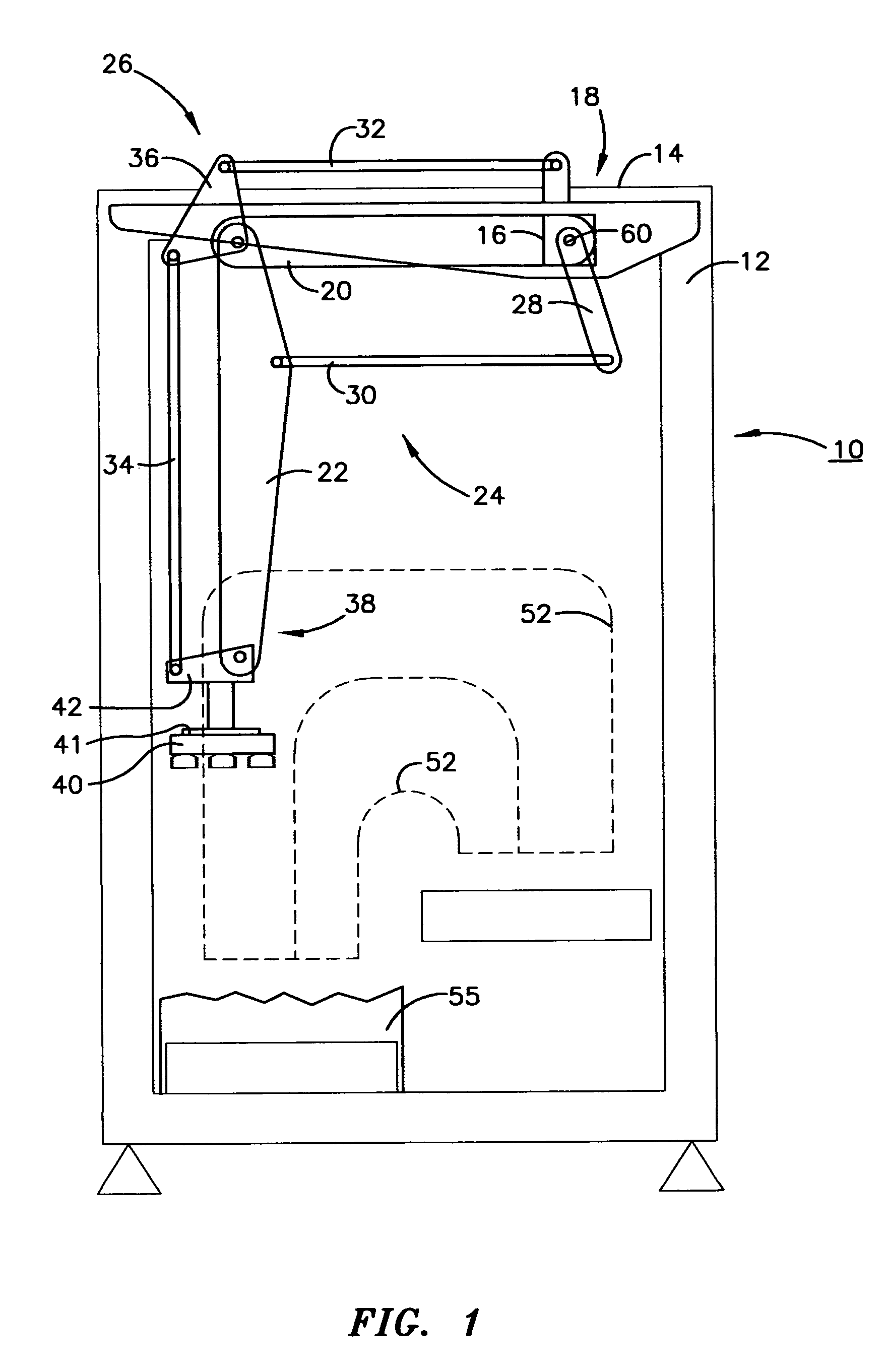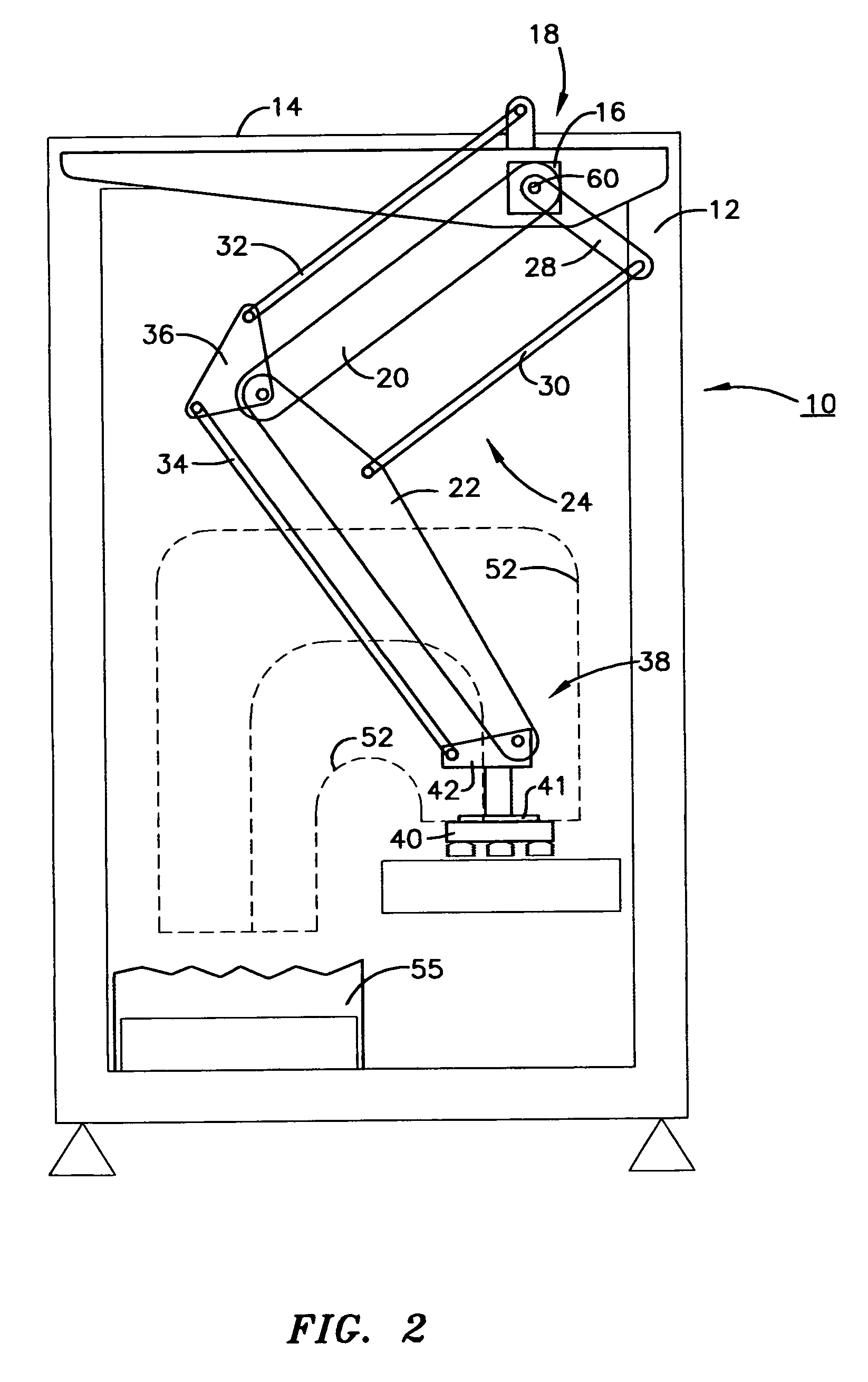Case packing robot
a robot and case technology, applied in the field of case packing robots, can solve the problems of unsatisfactory use in highly sanitary environments such as meat and dairy products packing, difficult sanitation, undesirable for sanitary applications,
- Summary
- Abstract
- Description
- Claims
- Application Information
AI Technical Summary
Benefits of technology
Problems solved by technology
Method used
Image
Examples
Embodiment Construction
[0012]Referring now to the accompanying drawings, the case loading articulated robot of the present invention 10 comprises a frame 12 that forms an integral part of robot 10 and defines the work space of robot 10. It should be specifically noted that all surfaces of frame 12 including top surface 14 are all slanted, i.e. tilted downward, to eliminate flat horizontal surfaces that might inhibit sanitizing. Additionally the various arms described hereinafter are of an open structure with no closed or sealed areas that could become contaminated to allow for ease of sanitation. As shown in the various Figures, servo motors 16 and 18 which drive generally horizontal first arm 20 proximate top 23 and generally vertical second arms 22 proximate sides 25 are fixed to frame 12 thus avoiding the need to provide arms 20 and 22 with adequate strength as to support arm drive servo motors, as is the case in conventional articulated robots wherein such drive motors are mounted on the arms of the a...
PUM
 Login to View More
Login to View More Abstract
Description
Claims
Application Information
 Login to View More
Login to View More - R&D
- Intellectual Property
- Life Sciences
- Materials
- Tech Scout
- Unparalleled Data Quality
- Higher Quality Content
- 60% Fewer Hallucinations
Browse by: Latest US Patents, China's latest patents, Technical Efficacy Thesaurus, Application Domain, Technology Topic, Popular Technical Reports.
© 2025 PatSnap. All rights reserved.Legal|Privacy policy|Modern Slavery Act Transparency Statement|Sitemap|About US| Contact US: help@patsnap.com



